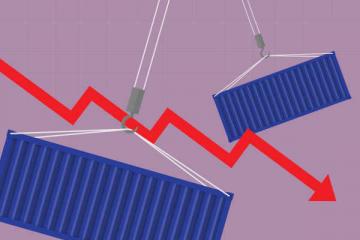I once observed a couple in a diner who refused to leave a tip for a slow server—from where they sat, they couldn’t see that the server had attended to an elderly customer who was having a heart issue. The ambulance arrived as the couple was leaving. From the server’s perspective, she was jilted by customers for being slow because she took the time to help someone in serious need—maybe she attributed the jilting to “bad” customers.
It’s called fundamental attribution bias. When someone makes life difficult, people tend to assume it’s a reflection of some fundamental aspect of that person’s personality. It’s amazing how many conversations I’ve had with leaders and managers in the past month that have focused on blaming people for challenges and problems at work. How likely is it that multiple people in an organization are conspiring to undermine their initiatives? Or that there would be that many incompetent workers all in one organization working for one manager?
We all bemoan the challenges of leading people when we’re trying to innovate—I’ve had those moments with my poor hapless students. “I made a great assignment for them, and they didn’t do it right! They don’t appreciate my efforts!” I moan, feeling the pain of a failed effort. Maybe the class somehow ended up with a bunch of deficient, lazy students—that’s possible, right? But I make the greatest strides when I recognize that maybe the brand-new assignment wasn’t well vetted or organized or presented, or maybe I didn’t do a good job of explaining its purpose, or I didn’t provide that one tool that would have made all the difference.
What I’m really trying to say is that before blaming others when things aren’t going well, we should assume that we need to focus on the process.
The work environment over the past year and a half has been especially challenging, and conversations with managers and leaders often go the direction of implementing “working harder” policies to make sure each worker is doing what they’re supposed to. Naturally, the workplaces that strictly enforce discipline and worker performance schemes are the ones that nearly always suffer high turnover and low morale. Worker performance is determined by the process more than most managers realize.
It seems counter-intuitive, but research shows that the “working harder” approach nearly always reduces actual performance because it erodes time spent improving, which in turn erodes long-term capability. This is called the “capability trap”—organizations experience a shock so they implement a work harder which does lead to short-term gains, but eventually it leads to worker burnout, loss of trust, increased turnover, and diminished investments in buildings, workers benefits, and other important but more difficult-to-measure investments that multiply worker capabilities.
Instead, when organizations confront challenges, leaders need to recognize that the challenge isn’t because workers are lazy or need to work harder—rather, it’s a clear sign that the organization lacks the capability to deal with the change in environment. The better response is to “work smarter” and focus on a systematic, process-based approach to improving capabilities. This is a slower approach that relies on metrics, talking to people, encouraging innovation, tearing down silos so that interactions can occur where they need to, and continuous investment in capabilities and process improvement. The only real solution to confronting a new situation is to adapt to the new situation; beating up on workers to just “work harder” at the old, maladapted processes deepens the investment in a competitive disadvantage.
It’s easy to see why managers focus on working harder, it gives an immediate boost to performance. Also, it’s far easier to identify defective products or underperforming service outcomes. Process problems are difficult to trace because they occur in interactions and relationships. And many companies reward “heroes” who fix “problems” instead of rewarding people who fix problems before they ever occur, even when they run objectively better performing shops. It takes a leader with vision to resist the quick fix, especially when there’s a lot of pressure from customers, suppliers, and the boss.
Supply chains are going to have to continuously adapt for the foreseeable future. The successful leaders will realize that maximizing the potential of their people is all about continuous improvement, empowering innovation at the lowest logical level, and adapting the right processes.
SC
MR

Latest Supply Chain News
- Few executives believe their supply chains can respond quickly to disruptions
- Technology’s role in mending supply chain fragility after recent disruptions
- Tech investments bring revenue increases, survey finds
- Survey reveals strategies for addressing supply chain, logistics labor shortages
- Israel, Ukraine aid package to increase pressure on aerospace and defense supply chains
- More News
Latest Podcast

 Explore
Explore
Business Management News
- Few executives believe their supply chains can respond quickly to disruptions
- Technology’s role in mending supply chain fragility after recent disruptions
- Survey reveals strategies for addressing supply chain, logistics labor shortages
- How CPG brands can deliver on supplier diversity promises
- How S&OP provides the answer to in-demand products
- AI, virtual reality is bringing experiential learning into the modern age
- More Business Management
Latest Business Management Resources

Subscribe

Supply Chain Management Review delivers the best industry content.

Editors’ Picks





